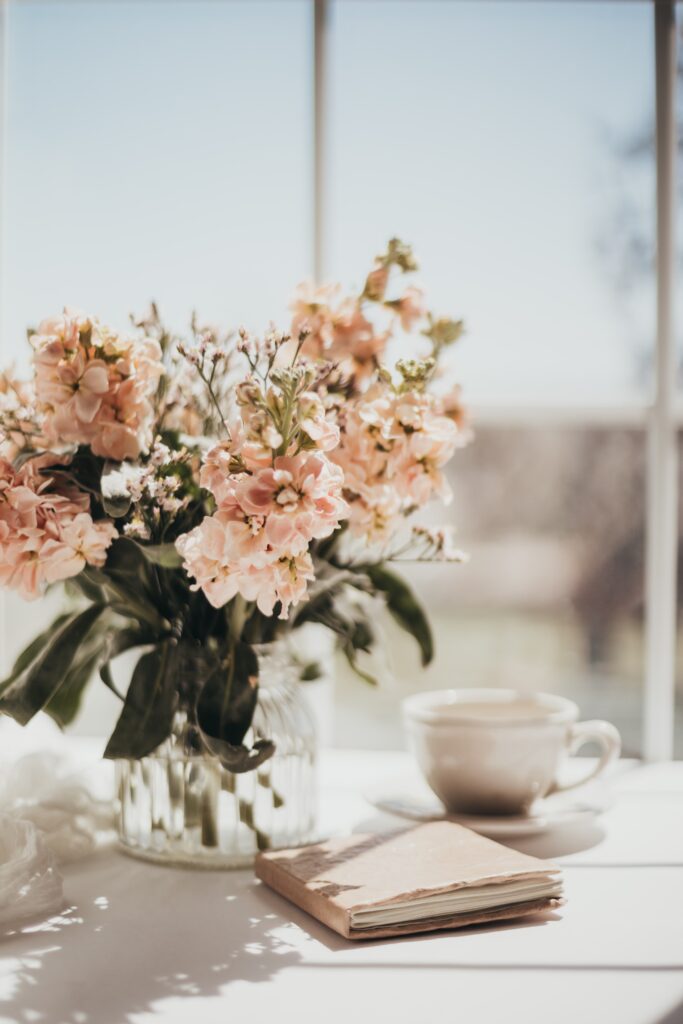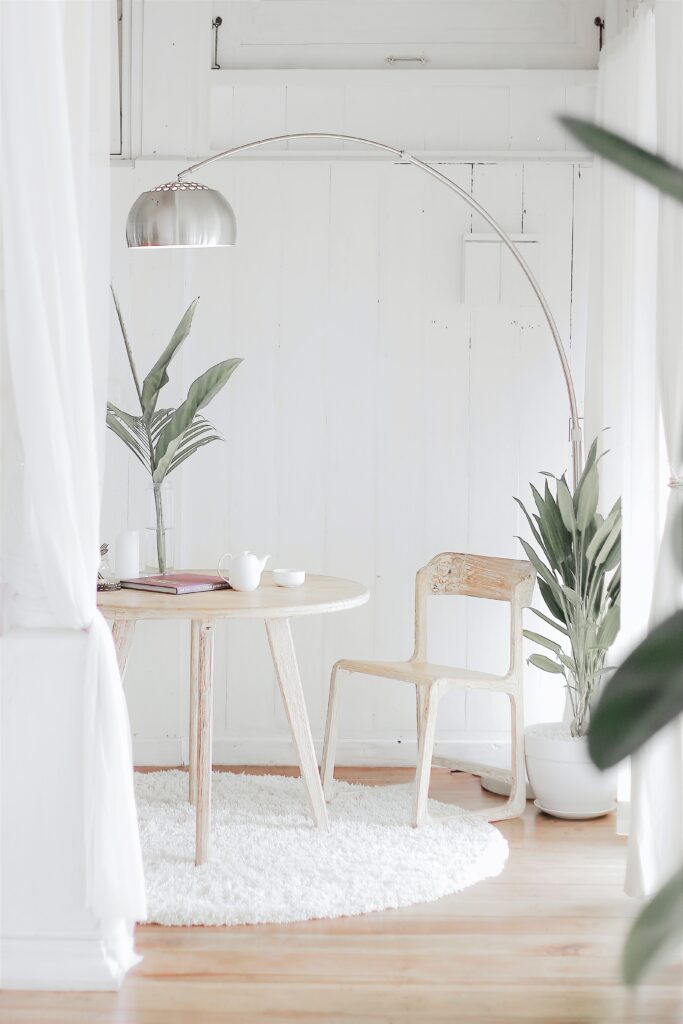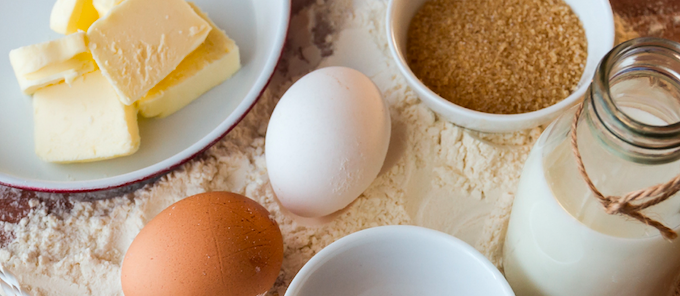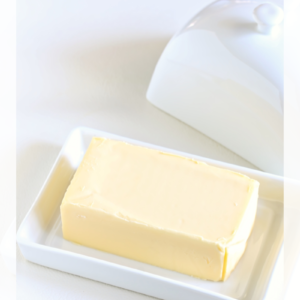The simple living lifestyle is becoming a popular trend. As the world grows more modern and future-driven, many reflect back to the old days when times were simple. What does living a simple lifestyle mean? Here at Farmstead Stories, I teach how to create a simple lifestyle and a handmade home. Read more to see how I have broken down a broad lifestyle term into common elements and simple how-to’s with input from self-sustaining homesteaders.

Despite being a popular trend, the idea of simple living is not new. People have long talked about the value of living a simple life. Living simply produces values such as finding purpose in what matters most rather than being dragged into the fruitless pursuit of more.
In this post, I focus on what simple living means today. I ask you to keep in mind that what “simple living” means to me is not what it means to everyone. Each person has their own unique perspective on what this term means.
What is the Meaning of Simple Living?
Simple living seems to be a very broad term that encompasses lots of beliefs and practices that result in a simpler life.
Simple living is often a reaction or rejection of the fast-paced, consumerist culture way of living.
In our home, simple living means clearing clutter in our home and our minds to focus on what matters most to us: following Jesus, setting our marriage as the foundation for our family, being humble, open, and transparent, and making space to create a fruitful life.

Specific Ways We Create a Simple Home:
- we start our days with coffee and scripture
- we keep a simple schedule that creates a productive week
- TV is limited to beneficial uses such as learning and research
- our meals are planned and prepared with the intention to serve our body
- we are resourceful with finances and view money as a tool
These are only a few examples of how we create a simple home. Remember, the list above is specific to my home; other homesteaders may have different views on what it means to their home.
How to Live a Simple Life:
Farmstead Stories is specifically designed to reach the audience of homesteaders, mamas, and women looking to live virtuously through a handmade home. Proverbs 31:10
Whether you find yourself in the niche of this page or not, read more to understand the basics to create a simple way of living.
Focusing on What Matters Most:
Focusing on what matters most creates meaningful purpose. As mentioned, each person defines their own version of a simple life. Finding what matters most in life is a road built with intention and patience.
For example, I felt a purpose in becoming a stay-at-home wife and setting intentions to create a handmade home. However, it wasn’t until I began putting action into creating a handmade home that I began to understand what simple living really meant. I had to learn what exactly matters most in my home.
Focusing on what matters most creates a life that is rich in connection. A simple life presents a pause compared to the fast-paced, modern world. It presents a connection to those around us by slowing down to say goodbye instead of barely choking out words in a rush out the door. It presents a connection to our past by remembering those that came before us and lived with less by default.
Finding Joy in the Journey to Less:
Many people are drawn to the joy that radiates within the realm of owning a simple life. The joy of the simple life is living with less and implementing only things and practices that serve a purpose.
Keeping life simple is the key. Finding contentment is crucial.
We’ve all heard the saying “less is more” but how many truly understand that more really does come from having less? More contentment. More joy. A more simple way of living.
Simple Living Means Slowing Down:
Living a fast-paced life creates chaos and confusion. The alarm goes off, breakfast is skipped or drowned by an overpriced coffee, the day is filled with dings and dongs of emails and phone calls, dinner is rushed because of ballgames and baths, and bedtime is bye until the circus starts again the next day. The day runs on as long as that sentence!
Simple living means slowing down. The alarm chimes a beautiful tone as the sun peers through the curtains. A fresh mind is opened with a morning stretch and gentle wake before climbing out of bed. Coffee is enjoyed while the birds are singing their morning tunes and breakfast is prepared before the family awakes. It’s a day filled with purpose. It’s a day worth reflecting. A cozy night of restful sleep until a new day arrives with new possibilities.
Simple living is observing the things we might otherwise miss. The opportunities we have available to create and provide each day are precious. Slow down long enough to enjoy a day before you miss a week. The years fly by but more will be remembered when given the chance to simply live.
Common Threads of Simple Living:
People who live a simple lifestyle often share common threads despite defining simple living in their own way. There is no one way to do “simple living.” There are no set rules to live simply. It simply comes down to writing your own definition and making space for what truly matters to you!
Here are the top 8 common threads for simple living…
1. Clear the Clutter
The first area that many people, including myself, begin to simplify is… the stuff. Living in an evolving, modern world, we have created a deeply-rooted consumerism problem. We are blessed to have so many advancements available but we are spoiled by not having limits on what we bring into our homes.
How many times are we going to clean out clothes, toys, and decorations so they can be replaced by the next trends in fashion and deals on decor?
We find ourselves in a cluttered house that feels impossible to keep clean. Inevitably, this leads to increased stress and a feeling of bondage. We let material things take over our homes and our living space.
Many people find a new sense of peace when they begin simplifying their belongings. For some, that looks like minimalism to varying degrees. For others, it means keeping only those things that bring joy, purpose, or beauty to the home.
2. Stacking the Calendar Slowly
The calendar is another area that often is cluttered by overcommitments. Some people juggle the busy schedule flawlessly, but others miss the small moments because there are so many others planned in between!
This is an area that I am constantly having to adjust. It is so easy to say “yes” to every opportunity! I am a people pleaser and truthfully, so is my husband. Recently, we caught ourselves saying yes to every person and opportunity that came our way. We had to draw the line when we realized we were exhausted and giving our time to spend with each other away. We love our circle but our marriage comes first.
The real truth is, I am limited. When I stretch myself too thin I get quickly overwhelmed, stressed, and am not actually enjoying all the “good” things I have crammed into my schedule.
We all have different personalities and capacities. We all have certain things we do have to show up to and play our part in. However, we can all choose to live below our own personal limits. Living with margin to separate importance and overcommitment is a common thread among those that choose a simple life.

Challenge: write out your activities for one week and ask these questions…
- How does the upcoming week look?
- Do you feel overwhelmed by the number of things to do or places to be?
- Did you create a margin or time to rest?
If you think you simply have too much to do, think about what things could be eliminated. Think about what things are most important versus those that can wait.
3. The Slow Pace of Life
Have you heard grandparents or great-grandparents say time stands still on the farm?
Those who have experienced living away from busy towns, billboard signs, interstates, big buildings, and billion-dollar businesses know the difference in time between the fields and the streets. Mark my words, there is a peace that stillness brings in life that is not found in city streets.
The slow pace of life also means simplifying our time. How often do we take on loads that are equal to or even above our limit? What does overcommitting ourselves lead to? Inevitable burnout and exhaustion.
Slowing down is a common pillar of a simpler life. Similar to the first two points, there is not one way to simplify time. You get to create the unique pace that works best for you and your family.
4. Limits to Technology
Next up, let’s consider the use of technology in our lives. I think we can all agree that technology is an incredible advancement. There are just some things in this modern world that make life easier.
Now, we all know the argument that technology renders a more negative impact on our lives than the good it can create. I believe technology is a good thing when used in moderation and with an intentional purpose. This could look like:
- limiting TV to beneficial uses such as learning and research
- avoiding technology (TV and phones) in the bedroom to ensure rest
- a minimalist phone that discourages addiction
- limiting the use and time spent on social media
- scheduling designated times for things like email or computer work
The general goal is to connect more with people and the world around you and spend less time in front of a screen. Live simply not technically.
5. Scratch Can Be Simple
A common thread of simple living is found in food preparation. There seems to be a resurgence of finding beauty and value in the process of making food from scratch. Though it often requires hard work, food from scratch can be simple!

Considering our health, food locally sourced and prepared from scratch tends to be more nutritious. Homesteaders typically use simpler ingredients and processes that yield nutritional benefits.
Preheating the oven and cooking frozen meals seems easy but it does not provide the same nutrition as a prepared meal. A frozen chicken raised for meat yields more nutrition and product than breaded patties from the grocery store freezer.
For our family, we find value in focusing on traditional foods that have offered nourishment for generations. This includes things like raw and local dairy, homemade bone broth, and fermented vegetables.
Beyond the obvious health benefits, making food from scratch can be a peaceful process. Picture kneading homemade bread dough, picking fresh vegetables from your garden, or smelling a steaming pot of bone broth brewing on your stovetop.
Scratch cooking does require more work than opening a box dinner from the frozen section but it is a major factor of the simple lifestyle. For fun, see how scratch cooking can double as a workout here!
6. Simple Fashion Style
Farmers have had their own fashion trends for forever! Think Carhartt, denim, overalls, prairie dresses, and patterns. Navajo and quilted vests did not become popular through the Dutton family alone! Western is a style that is simple and practical beyond the means of trendy fashion.
Furthermore, slow fashion by definition refers to considering the overall impact of clothing purchases. This includes everything from the environmental impact of obtaining the materials, to the working conditions of everyone along the supply chain.
The goal is often to buy clothing that is good to people and animals, good to the environment, and durable.
7. Crafting Over Consuming
Crafting over consuming is a popular hobby-building experience in many simple lifestyle homes.
Valuing creativity more than consuming is an aspect of simple living because it offers skill development. Some find joy and value in creating their own clothing from scratch. Others learn to create non-toxic household products like dish soap, laundry detergent, and shower spray.
While we all consume in some capacity, it is rewarding to find creative outlets. Many find that some things, both foods and products, are actually fun to create. They are also cheaper and more natural.
8. Natural Materials and Products
Speaking of natural… simple living is the use of natural materials and products.
It probably is not surprising that many people who live simply also live naturally. It seems to be a natural overflow of becoming more thoughtful about the way you spend your time and resources.
There are a wide variety of ways this plays out, but some examples include:
- choosing locally sourced and organic foods
- making or buying non-toxic household products
- wearing clothing from natural materials like organic cotton or wool
- crafting with non-toxic materials
A Closing Note on Simple Living:
Simple living is not a to-do list of ways to get away from modern society. It’s not about adding something more to your already full plate.
It’s a welcome call to pause, evaluate your life, and make purposeful changes if needed.
If you feel drawn to the simple lifestyle, start with the challenges in this post and remember to keep it simple. Try one thing at a time until you are able to define living simply according to your household and what matters to you.
Other Perspectives on Simple Living:
Gathering Grace Home – Easy Ways to Simplifying Home and Life
Heart’s Content Farmhouse – The Ultimate Guide to Simple Living for Beginners
Little House Simple Living – Goals to Simplify Your Life
Salt and Light Homemaking – Slow and Simple Family Living
Read these views on minimalism…
Simple and Healthy Living – What is Minimalism?
Simple Living by Shannon Torrens – What is Family Minimalism?
Stephanie Algra – How Minimalism Can Help You Manage Your Home Better?
